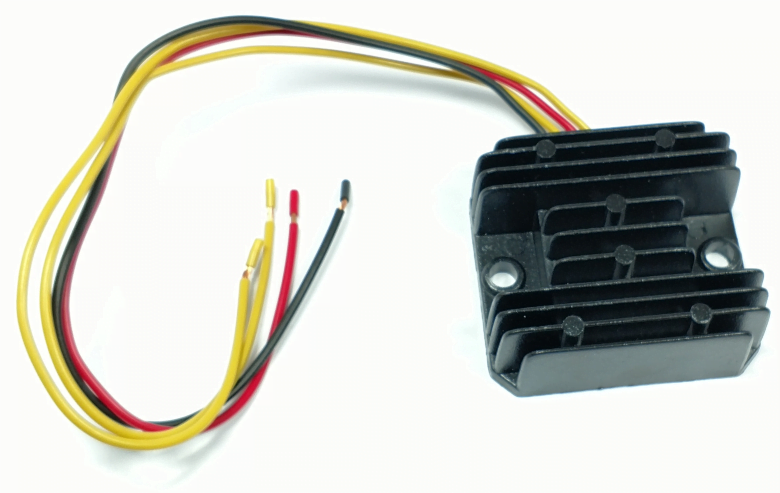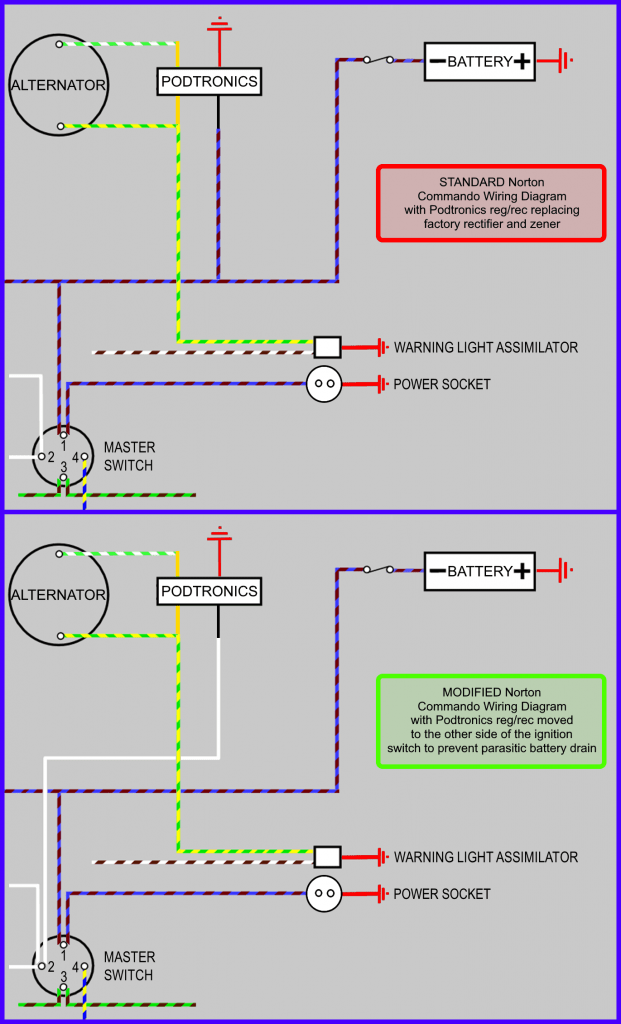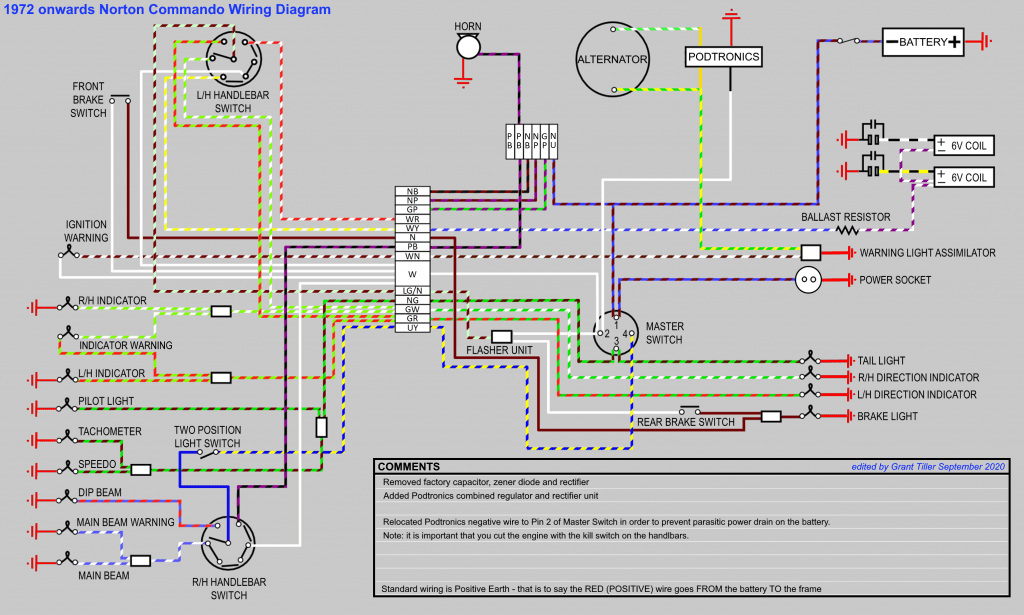
A few people have noticed that the Podtronics combined regulator/rectifier has a parasitic drain on the battery when the bike is sat in the shed.
I have verified this myself and can confirm that it draws just under half a milliamp when everything on the bike is shutdown.
This has been verified by Jean Des Rosiers in a post that you can read here.
Let’s just get into context how much of a (non) issue this is.
If you take a low spec battery like the standard one on a pre-MK3 Norton Commando – the Yuasa YB9B, it’s capacity is 9ah
So with the parasitic current draw of a Podtronics, it will take over a year to drain the battery to half it’s capacity.
If that’s an issue – I feel the easiest way to deal with the ‘problem’ is to simply put the bike on a tender (charger) every six months (don’t forget to take the battery off the bike, or remove the fuse when you charge it)
I see no parasitic power drain with the original Zener or the Shindengen units that I like to use (compared to the 0.5mA of the Podtronics short-type unit)
There must be some, but it doesn’t register either on the Fluke nor my analogue AVO (which is far more sensitive)
There is an alternative if you want to take the issue of parasitic drain out of the picture altogether.
That is to relocate the Podtronics to the other side your ignition switch and treat it like the other consumers on the bike.
The only downside to doing this is that you will be reliant upon having the kill switch on your handlebars in order to cut power to your ignition at the end of a ride.
Here is a factory wiring diagram with the Podtronics unit added into the alternative location PNG 3066×1841
As I said before, for me, personally I don’t feel that this is an issue at all. If your battery goes flat over six months (you car would do the same by the way), just give it a charge the night before you go for a ride.
I hope this will prove to be useful to someone!
Warning Light Assimilators
It is important to note that MOST aftermarket reg/rec manufacturers do not support either the pre-MK3 Lucas 3AW silver can warning light assimilator OR the MK3 one.
Boyer Bransden are very explicit in their instructions for the Power Bow – they have even made an alternative Power Box model that includes a charge warning light.
Other manufacturers (PODtronics, SPARX and the Tri-Spark MOSFET units) either mention it in their smallprint/FAQs or neglect to mention it at all.
As such, I would recommend NOT using the original assimilator and consider your alternatives.
You could replace your assimilator with a solid state equivalent like the CoolCat Express (warning: you have to buy positive SS3AW-P or negative SS3AW earth)
Alternatively, you could follow my recommendation and buy a Charge Warning Light instead.
A warning light assimilator tells you that the alternator stator is producing an AC output, whereas a Charge Warning Light tells you that the battery is charging, the reg/rec is working and it gives you much more useful information about performance of the charging system and the state of charge.
I personally recommend the Improving Classic Motorcycles “Standard” Charge Warning Light. This model wires in to the standard incandescent lamp, so it looks better than a modern LED. It matches all your other warning lamps, which is particularly important on the MK3 with it’s instrument ‘console’
The ‘brainbox’ is about the size of a postage stamp, and can easily live inside the headlight bucket or under the MK3 ‘console’
Categories: motorcycles, Tech Articles




Thanks for these very useful diagrams. I’m getting ready to fit an Alton starter and a Podtronics unit on my 1973 750 Commando so these diagrams really help to clarify things.
Dave Pritchard, BC, Canada
Thanks so much for your kind words!
It’s always great to hear that someone out there finds my page useful!
hello, who is selling Podtronics in the Netherlands> Peter Volkers volke372@planet.nl
I suggest you have a chat with Constant Trossèl at Holland Norton Works in Hillegom
http://www.hollandnortonworks.eu
Great company, and he is a good, trustworthy community guy!
Hi Grant,
I want to run my ’71 750 Commando without a battery using a Podtronics battery eliminator (or equilavent) but I haven’t been able to find a wiring diagram on how to connect the Podtronics unit from them, or any other source. The bike will be on a Hunt magneto and so all I need power for is front and rear lights, horn and brake light. (no indicators).
I wondered if you have a diagram that shows how this can be done?
Thank you in advance…
Richard , London
Hey Richard,
I have added a schematic for your bike, which includes the Joe Hunt Magneto and no battery.
It can be found here:
https://granttiller.com/custom-norton-commando-wiring-diagram-richard-foster
Cheers,
Grant